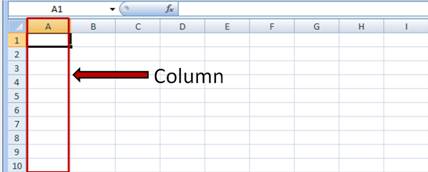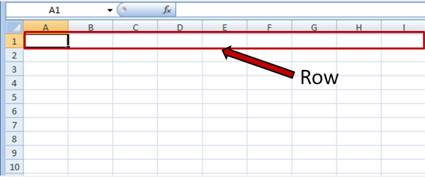

Worksheets are divided into columns, rows, and cells. That's the grid you see when you open up a workbook.
Columns go from top to bottom of the worksheet, vertically. Rows go from left to right on the worksheet, horizontally. A cell is the space where one column and one row meet.
Each column has an alphabetical heading at the top. The first 26 columns have the letters from A through Z. Each worksheet contains 16,384 columns in all, so after Z the letters begin again in pairs, AA through AZ.
After AZ, the letter pairs start again with columns BA through BZ, and so on, until all 16,384 columns have alphabetical headings.
Each row also has a heading. Row headings are numbers, from 1 through 1,048,576.
The alphabetical headings on the columns and the numerical headings on the rows tell you where you are in a worksheet when you click a cell. The headings combine to form the cell address, also called the cell reference.
